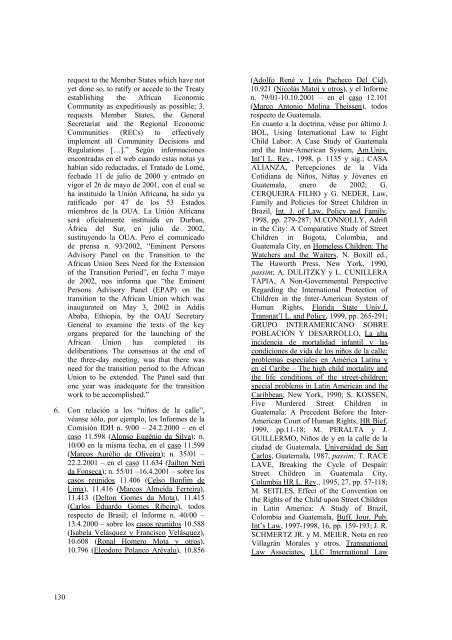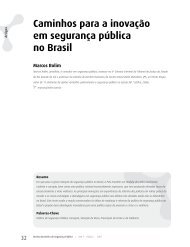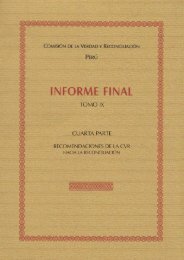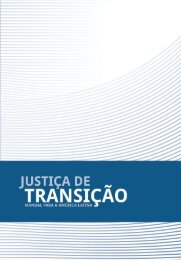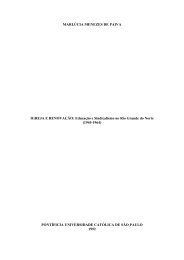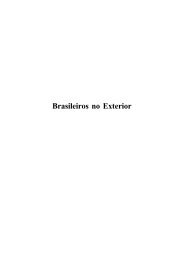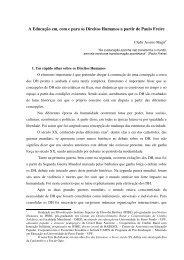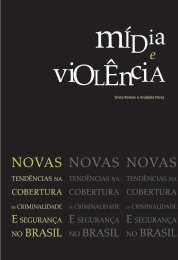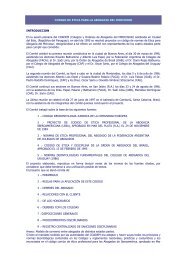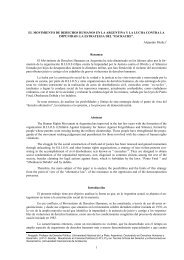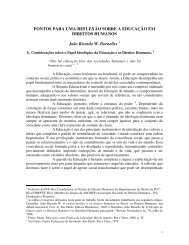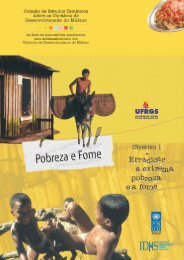ISSN 1677-1419 Ano 4, Vol. 4, Número 4 - 2003 - DHnet
ISSN 1677-1419 Ano 4, Vol. 4, Número 4 - 2003 - DHnet
ISSN 1677-1419 Ano 4, Vol. 4, Número 4 - 2003 - DHnet
You also want an ePaper? Increase the reach of your titles
YUMPU automatically turns print PDFs into web optimized ePapers that Google loves.
130<br />
request to the Member States which have not<br />
yet done so, to ratify or accede to the Treaty<br />
establishing the African Economic<br />
Community as expeditiously as possible; 3.<br />
requests Member States, the General<br />
Secretariat and the Regional Economic<br />
Communities (RECs) to effectively<br />
implement all Community Decisions and<br />
Regulations […].” Según informaciones<br />
encontradas en el web cuando estas notas ya<br />
habían sido redactadas, el Tratado de Lomé,<br />
fechado 11 de julio de 2000 y entrado en<br />
vigor el 26 de mayo de 2001, con el cual se<br />
ha instituido la Unión Africana, ha sido ya<br />
ratificado por 47 de los 53 Estados<br />
miembros de la OUA. La Unión Africana<br />
será oficialmente instituida en Durban,<br />
África del Sur, en julio de 2002,<br />
sustituyendo la OUA. Pero el comunicado<br />
de prensa n. 93/2002, “Eminent Persons<br />
Advisory Panel on the Transition to the<br />
African Union Sees Need for the Extension<br />
of the Transition Period”, en fecha 7 mayo<br />
de 2002, nos informa que “the Eminent<br />
Persons Advisory Panel (EPAP) on the<br />
transition to the African Union which was<br />
inaugurated on May 3, 2002 in Addis<br />
Ababa, Ethiopia, by the OAU Secretary<br />
General to examine the texts of the key<br />
organs prepared for the launching of the<br />
African Union has completed its<br />
deliberations. The consensus at the end of<br />
the three-day meeting, was that there was<br />
need for the transition period to the African<br />
Union to be extended. The Panel said that<br />
one year was inadequate for the transition<br />
work to be accomplished.”<br />
6. Con relación a los “niños de la calle”,<br />
véanse sólo, por ejemplo, los Informes de la<br />
Comisión IDH n. 9/00 – 24.2.2000 – en el<br />
caso 11.598 (Alonso Eugênio da Silva); n.<br />
10/00 en la misma fecha, en el caso 11.599<br />
(Marcos Aurélio de Oliveira); n. 35/01 –<br />
22.2.2001 – en el caso 11.634 (Jailton Neri<br />
da Fonseca); n. 55/01 –16.4.2001 – sobre los<br />
casos reunidos 11.406 (Celso Bonfim de<br />
Lima), 11.416 (Marcos Almeida Ferreira),<br />
11.413 (Delton Gomes da Mota), 11.415<br />
(Carlos Eduardo Gomes Ribeiro), todos<br />
respecto de Brasil; el Informe n. 40/00 –<br />
13.4.2000 – sobre los casos reunidos 10.588<br />
(Isabela Velásquez y Francisco Velásquez),<br />
10.608 (Ronal Homero Mota y otros),<br />
10.796 (Eleodoro Polanco Arévalo), 10.856<br />
(Adolfo René y Luis Pacheco Del Cid),<br />
10.921 (Nicolás Matoj y otros), y el Informe<br />
n. 79/01-10.10.2001 – en el caso 12.101<br />
(Marco Antonio Molina Theissen), todos<br />
respecto de Guatemala.<br />
En cuanto a la doctrina, véase por último J.<br />
BOL, Using International Law to Fight<br />
Child Labor: A Case Study of Guatemala<br />
and the Inter-American System, Am.Univ.<br />
Int’l L. Rev., 1998, p. 1135 y sig.; CASA<br />
ALIANZA, Percepciones de la Vida<br />
Cotidiana de Niños, Niñas y Jóvenes en<br />
Guatemala, enero de 2002; G.<br />
CERQUEIRA FILHO y G. NEDER, Law,<br />
Family and Policies for Street Children in<br />
Brazil, Int. J. of Law, Policy and Family,<br />
1998, pp. 279-287; M.CONNOLLY, Adrift<br />
in the City: A Comparative Study of Street<br />
Children in Bogota, Colombia, and<br />
Guatemala City, en Homeless Children: The<br />
Watchers and the Waiters, N. Boxill ed.,<br />
The Haworth Press, New York, 1990,<br />
passim; A. DULITZKY y L. CUNILLERA<br />
TAPIA, A Non-Governmental Perspective<br />
Regarding the International Protection of<br />
Children in the Inter-American System of<br />
Human Rights, Florida State Univ.J.<br />
Transnat’l L. and Policy, 1999, pp. 265-291;<br />
GRUPO INTERAMERICANO SOBRE<br />
POBLACIÓN Y DESARROLLO, La alta<br />
incidencia de mortalidad infantil y las<br />
condiciones de vida de los niños de la calle:<br />
problemas especiales en América Latina y<br />
en el Caribe – The high child mortality and<br />
the life conditions of the street-children:<br />
special problems in Latin American and the<br />
Caribbean, New York, 1990; S. KOSSEN,<br />
Five Murdered Street Children in<br />
Guatemala: A Precedent Before the Inter-<br />
American Court of Human Rights, HR Bief,<br />
1999, pp.11-18; M. PERALTA y J.<br />
GUILLERMO, Niños de y en la calle de la<br />
ciudad de Guatemala, Universidad de San<br />
Carlos, Guatemala, 1987, passim; T. RACE<br />
LAVE, Breaking the Cycle of Despair:<br />
Street Children in Guatemala City,<br />
Columbia HR L. Rev., 1995, 27, pp. 57-118;<br />
M. SEITLES, Effect of the Convention on<br />
the Rights of the Child upon Street Children<br />
in Latin America: A Study of Brazil,<br />
Colombia and Guatemala, Buff. Jour. Pub.<br />
Int’s Law, 1997-1998, 16, pp. 159-193; J. R.<br />
SCHMERTZ JR. y M. MEIER, Nota en reo<br />
Villagrán Morales y otros. Transnational<br />
Law Associates, LLC International Law


